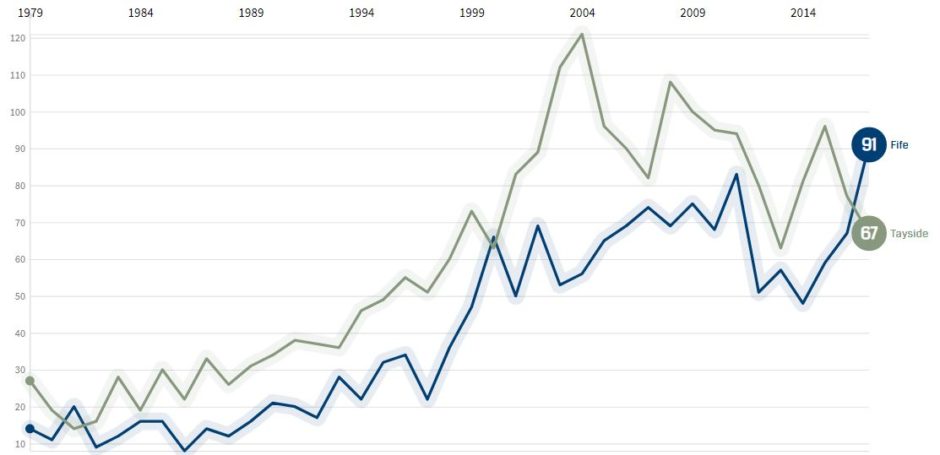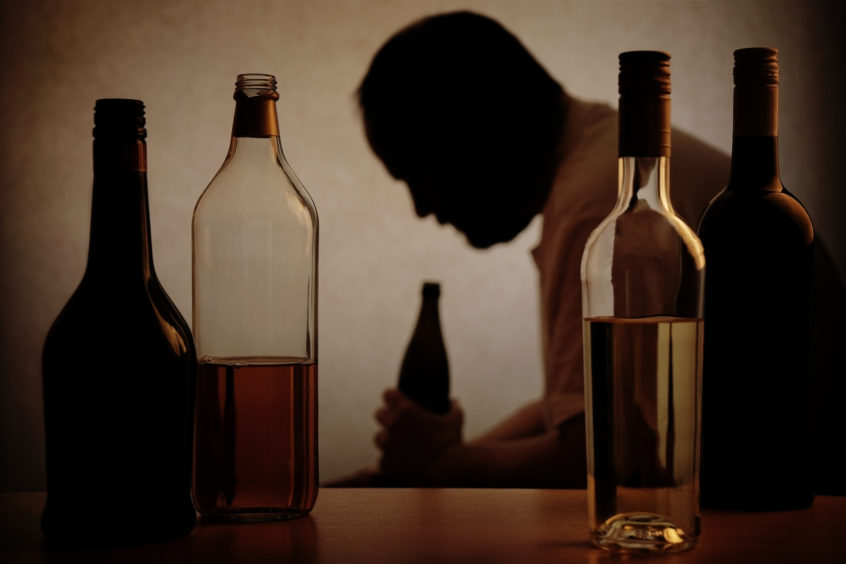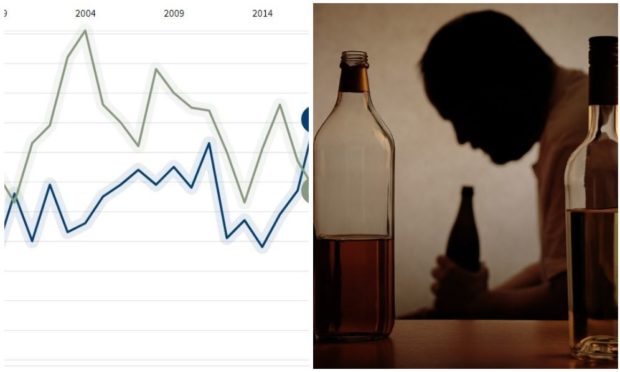The scale of Fife’s problem with alcohol has been thrown into sharp focus after the number of drink-related deaths reached its highest level in a generation.
A total of 91 alcohol-specific deaths – where alcohol consumption was deemed the main underlying cause of death – were recorded in 2017, the largest number since at least 1979.
The previous peak was in 2011, when 83 cases were identified, and the new high contrasts with a low of just eight recorded in the region back in 1986.
In Tayside the number was 67 in 2016, down 10 on 2017 and nearly half the historic high of 121 in 2004.
The year 2017 was the first time since 1981 that more people died of alcohol consumption in Fife than Tayside.
The statistics emerged as part of Fife’s latest public health report, which suggests more than 70,000 adults across the kingdom drink more than the weekly guidelines.
They cover the period before the Scottish Government’s minimum pricing legislation was introduced.
Dona Milne, director of public health at NHS Fife, said agencies and partners have been working over the last year to address alcohol availability, noting almost three quarters of all alcohol sold in Scotland is sold through off-sales.
She expressed disappointment Fife Licensing Board decided not to heed the health board’s recommendation to stop granting off-sale licences in areas of perceived over-provision.
“This makes it more difficult to prevent new licenses being granted or current licenses being extended,” she explained.
“Objections can, however, be made on the grounds of licensing objectives, including ‘protecting and improving public health’.
“The public health department and our partners will therefore continue to object on these grounds to new or extended off-licences in targeted areas of Fife as part of our strategic approach to reducing alcohol harms in Fife.”

Ms Milne also noted NHS Fife is working with colleagues on a specific review of alcohol-specific deaths in a bid to prevent future deaths.
“We will also provide public health input to the Alcohol and Drug Partnership to ensure that effective evidence-based alcohol prevention and treatment services are in place, and that there are clear referral guidelines between alcohol-specific and mainstream services,” she added.
Among the adults who drink beyond weekly guidelines, the report revealed those living in Fife’s most deprived areas consume, on average, 43 units per week compared to 28 units per week among adults living in the least deprived areas.
The advice is to drink no more than 14 units a week on a regular basis – the equivalent of six pints of average strength beer or 10 small glasses of low strength wine.

While alcohol-specific deaths have spiked, estimates also suggest 6.5% of all deaths in Fife are caused, wholly or partially, by alcohol consumption – equal to 272 deaths in Fife in 2017.
Alcohol related hospital admissions have increased each year for the last three years and accounted for 2,350 admissions in 2017/18, while rates of both alcohol related hospital admissions and alcohol-specific deaths are “significantly higher” in the region’s most deprived communities.
The alarming numbers come as estimates put the cost to the Fife economy of alcohol-related harm at £130 million.
More than £55 million of that comprises the cost to police of dealing with alcohol-related crime, although alcohol-related harm is thought to cost the health service in Fife almost £17 million – in terms of hospital admissions, A&E attendances, ambulance journeys and GP consultations.
An additional £15 million is estimated to be spent on social care which includes social work caseloads due to problem alcohol use and community service and probation orders related to drink.










